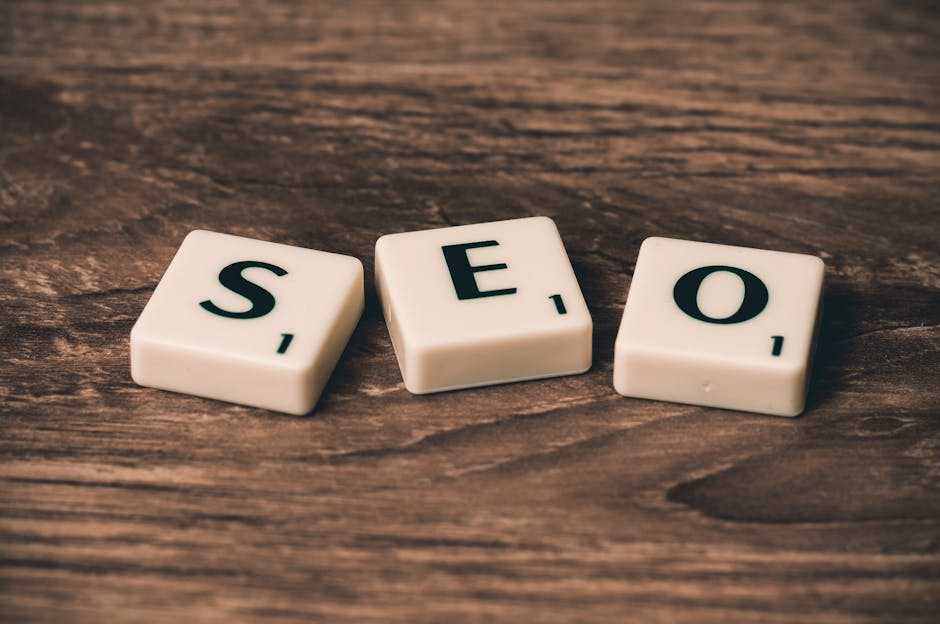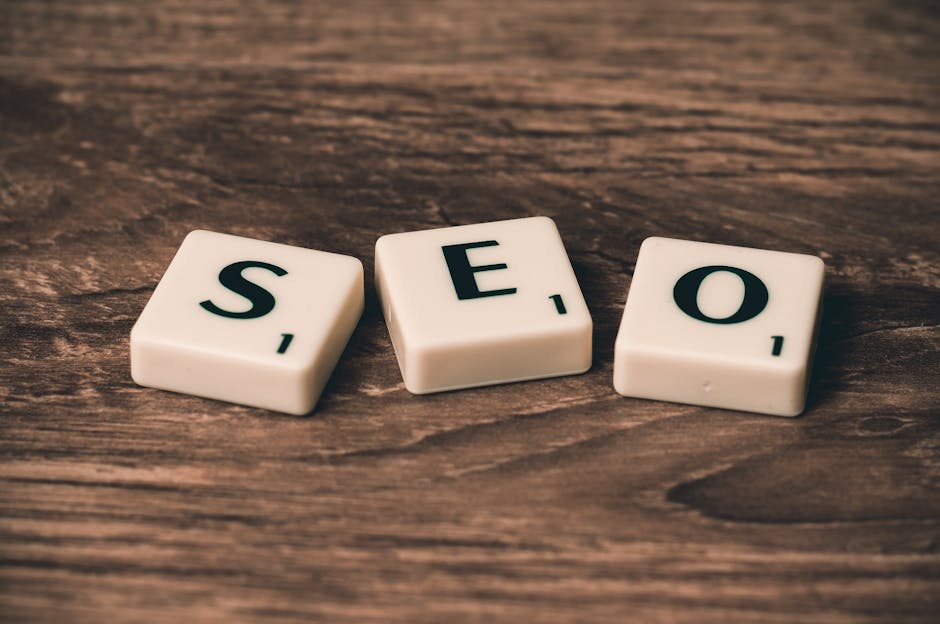Table of Contents
- The Big Guns and Their Own H1 Choices
- Why You’d Wanna Mess With It
- The “Should H1 Be Blog Title For SEO” Conundrum: When It’s Fine to Match
- FAQs I Hear All the Blasted Time
- The Reader First, Always
- The Big Guns and Their Own H1 Choices
- Why You’d Wanna Mess With It
- The “Should H1 Be Blog Title For SEO” Conundrum: When It’s Fine to Match
- FAQs I Hear All the Blasted Time
- The Reader First, Always
Twenty years in this racket, and I still see folks tied up in knots over the H1. It’s like some kinda sacred scroll, this H1 tag, for some. You ask ’em if their blog title should be the H1 for SEO, and they look at you like you just asked if the moon’s made of cheddar. Truth is, it’s not that deep, or it never needed to be. Used to be, back when Google was just a wee bairn, yeah, you chucked your main keyword right in that H1. The title, the URL, the H1. All the same, word for word. Like a broken record. You know, to give the search engines a proper boot up the backside. Make sure they knew exactly what you were on about.
Now? Things ain’t so simple. Or maybe they are, and we just overthink it. Google got smart, you see. It learned to read, pretty much. It ain’t looking for exact word matches as much as it’s trying to figure out what you’re really talking about. What problem are you solving? What question are you answering? That’s where the juice is. So this whole debate about “should h1 be blog title for seo” gets a bit muddled, don’t it?
The real deal is, your title tag, that’s the bit people see in the search results. That’s your shop window. It needs to grab folks by the eyeballs and make ‘em click. The H1, on the other hand, that’s what’s on the page itself. It’s the big headline right there. What happens after they’ve already walked through your door. Different jobs, those two. Very different.
The Big Guns and Their Own H1 Choices
You look at the big publishers, right? The ones who spend more on coffee than most small businesses make in a year. They don’t always keep things matchy-matchy.
What The New York Times Does
Take The New York Times. Sometimes their title tag and their H1 are pretty close, near identical. Especially for breaking news, a straightforward piece. But other times, say for a long-form investigation, the title tag might be more punchy, a bit more intriguing for the SERP. The H1 on the page though? Might be more descriptive, more factual. The actual headline. It’s a subtle shift, but it’s there. They’re not doing it by accident, I can tell you that for free.
BBC’s Approach to Headlines
Or have a look at the BBC. Their news articles, same thing. Title in Google, then the headline on the page. Often, they mirror each other, but not always. The title might be shorter, optimized for screen space. The on-page H1, well, that’s got the room to breathe a bit, to give you the full scoop. It needs to be clear, no ambiguity. You don’t want someone clicking through, then thinking, “Wait, is this even the same story?”
How Google, Yes Google, Handles Its Own Content
Even Google itself, on its various blogs like the Google Search Central blog, they play this game. Sometimes the title and H1 are the same, sometimes they tweak one. Especially if they’re trying to target a slightly broader audience with the search listing, and then narrow down the focus once you’re on the page. It’s a dance. Not a rigid march.
Why You’d Wanna Mess With It
Now, why would you want to tweak your H1 so it ain’t exactly like your title tag? Plenty of reasons, honestly.
First off, readability. An H1 needs to be easy on the eyes. It needs to make sense right away. Your title tag, it’s fighting for real estate in a search result. Character limits, clickbait-y goodness, that’s its domain. The H1, though, it’s gotta hook the person who’s already there. Say your title tag is “The Ultimate Guide to Widget Polishing: No More Dull Widgets.” A bit long for an H1, maybe. Your H1 could simply be “How to Get Your Widgets Sparkling.” Clear, direct, no fluff. Different purposes, see?
Then there’s the whole keyword thing. I know, I know, I just said Google’s smarter. But you still need words for people to find you. Maybe your title tag has a broader, higher-volume keyword. “Best Dog Food for Puppies.” But your article really dives into a specific type of food, say, “Grain-Free Options for Young Pups.” Your H1 could use that more specific phrase. Still useful for SEO, but it tells the reader exactly what they’re getting into. Don’t go keyword stuffing it, mind. That’s a mug’s game.
Agencies Who Know Their Onions
Talk to agencies that actually get this stuff. Firms like Moz, they’ve preached about user experience for years. They’ll tell you the H1 is for the reader. It’s about clarity.
Or Search Engine Journal, another one that’s been in the trenches. They’ll tell you that while the H1 is important for context and structure, it’s not the only thing. Content quality, that’s always the top dog. A decent H1 helps, sure, but a rubbish article won’t be saved by a perfect H1 match.
Even the big content houses like Contently or NewsCred, they’re all about storytelling and engagement. They push for headlines that resonate. Sometimes that means the internal H1 has a slightly different flavor than what gets pushed out to Google. It’s about matching the expectation from the click with the content on the page. You get that?
The “Should H1 Be Blog Title For SEO” Conundrum: When It’s Fine to Match
Look, sometimes it’s fine for the H1 to be the same as your title tag. When does that happen? Mostly when your blog post is pretty straightforward. A short news piece. A simple announcement. A quick “how-to” that’s exactly what it says on the tin. If your title is already perfect for both attracting clicks and being the main heading on the page, then great. Don’t fix what ain’t broken. There’s no Google penalty for identical H1s and title tags. Never has been. It’s just not always the best strategy. Some people get caught up in dogma.
I remember this one time, working with a client. They were convinced, absolutely convinced, that every single H1 had to be an exact copy of the meta title. They’d read it in some old SEO handbook, probably from 2008. We’d try to explain, “Look, the search result title is doing one job, the on-page H1 another.” They just couldn’t wrap their head around it. “Google likes consistency,” they’d say, with that look of utter certainty. I had to bite my tongue. Hard. Google likes content that answers questions. Google likes satisfied users. That’s what it likes. The consistency it likes is consistent quality.
The Myth of Keyword Density in H1s
Folks get all hung up on keyword density, even for the H1. It’s not about stuffing in a hundred keywords. The H1 signals to Google and the reader what the primary topic of the page is. One clear, relevant phrase. That’s it. Over-optimizing, that’s where you trip yourself up. It used to be, you’d see H1s that were just keyword mash-ups. Horrendous. Like something a robot wrote. You still see it sometimes, bless their gormless little hearts.
FAQs I Hear All the Blasted Time
So, should H1 be blog title for SEO? I get asked this all the time. People want a simple “yes” or “no.” My answer? It depends, doesn’t it? It depends on your content, your strategy, and what you’re trying to achieve with that particular piece. There ain’t no magic bullet.
Another one: “Does having a different H1 hurt my rankings?” Nah, it generally doesn’t. If anything, it can help. A well-crafted title tag brings people in. A clear, compelling H1 keeps them on the page. Longer dwell time, lower bounce rates. Those are good signals, mate. Real good. Google looks at those things. It ain’t just about keywords anymore. It’s about the whole blinking experience.
What about “Are H1s even that important anymore?” Aye, they are. Still a strong signal for topical relevance. They help Google understand your content’s main subject. And for us humans? They break up the content, guide the eye. Imagine reading a long article with no clear headings. A proper faff, that would be. So yeah, important. Just not in the old, obsessive way.
And “Should H1 be exactly the same as the SEO title?” No, not necessarily. I think I’ve made that clear. Sometimes it will be, naturally. Other times, it’s smarter to make them distinct. It’s about being smart, not being rigid.
The Reader First, Always
Look, for me, after all these years pushing words around a screen, it always comes back to the reader. Always. If your H1 makes sense to a human being, if it grabs their attention, if it sets up the content clearly, then you’re ninety percent of the way there. If it confuses them, or it’s just some keyword salad, then you’ve shot yourself in the foot before they even read the first sentence. The machines, they’re getting smarter, sure, but they’re still trying to act like us. So make it good for us.
Think about the user journey. Someone types a query into Google. They see your title tag. It looks good, so they click. Now they’re on your page. The first thing they see, the biggest heading, that H1. It should confirm they’re in the right place. It should make them want to keep reading. If your title tag was “Exploring the Nuances of Avian Migratory Patterns in Sub-Saharan Africa,” but your H1 on the page is “Bird Flights in Africa,” that’s probably a good thing. The title was more formal for a scientific search; the H1 is more approachable once they landed.
So, when people ask me, “should h1 be blog title for seo?”, I usually just give ’em a look. Then I say, “Does it make sense? Does it help the person who clicked? Then you’re probably doing alright.” You ain’t building a rocket ship here. You’re just trying to tell a story or answer a question. Make it clear. Make it readable. And don’t sweat the small stuff that much. There’s always another optimization to chase, another shiny new “best practice” that’ll probably change next year anyway. Focus on the words, focus on the people reading them. That’s the real secret, if there is one.
Twenty years in this racket, and I still see folks tied up in knots over the H1. It’s like some kinda sacred scroll, this H1 tag, for some. You ask ’em if their blog title should be the H1 for SEO, and they look at you like you just asked if the moon’s made of cheddar. Truth is, it’s not that deep, or it never needed to be. Used to be, back when Google was just a wee bairn, yeah, you chucked your main keyword right in that H1. The title, the URL, the H1. All the same, word for word. Like a broken record. You know, to give the search engines a proper boot up the backside. Make sure they knew exactly what you were on about.
Now? Things ain’t so simple. Or maybe they are, and we just overthink it. Google got smart, you see. It learned to read, pretty much. It ain’t looking for exact word matches as much as it’s trying to figure out what you’re really talking about. What problem are you solving? What question are you answering? That’s where the juice is. So this whole debate about “should h1 be blog title for seo” gets a bit muddled, don’t it?
The real deal is, your title tag, that’s the bit people see in the search results. That’s your shop window. It needs to grab folks by the eyeballs and make ‘em click. The H1, on the other hand, that’s what’s on the page itself. It’s the big headline right there. What happens after they’ve already walked through your door. Different jobs, those two. Very different.
The Big Guns and Their Own H1 Choices
You look at the big publishers, right? The ones who spend more on coffee than most small businesses make in a year. They don’t always keep things matchy-matchy.
What The New York Times Does
Take The New York Times. Sometimes their title tag and their H1 are pretty close, near identical. Especially for breaking news, a straightforward piece. But other times, say for a long-form investigation, the title tag might be more punchy, a bit more intriguing for the SERP. The H1 on the page though? Might be more descriptive, more factual. The actual headline. It’s a subtle shift, but it’s there. They’re not doing it by accident, I can tell you that for free.
BBC’s Approach to Headlines
Or have a look at the BBC. Their news articles, same thing. Title in Google, then the headline on the page. Often, they mirror each other, but not always. The title might be shorter, optimized for screen space. The on-page H1, well, that’s got the room to breathe a bit, to give you the full scoop. It needs to be clear, no ambiguity. You don’t want someone clicking through, then thinking, “Wait, is this even the same story?”
How Google, Yes Google, Handles Its Own Content
Even Google itself, on its various blogs like the Google Search Central blog, they play this game. Sometimes the title and H1 are the same, sometimes they tweak one. Especially if they’re trying to target a slightly broader audience with the search listing, and then narrow down the focus once you’re on the page. It’s a dance. Not a rigid march.
Why You’d Wanna Mess With It
Now, why would you want to tweak your H1 so it ain’t exactly like your title tag? Plenty of reasons, honestly.
First off, readability. An H1 needs to be easy on the eyes. It needs to make sense right away. Your title tag, it’s fighting for real estate in a search result. Character limits, clickbait-y goodness, that’s its domain. The H1, though, it’s gotta hook the person who’s already there. Say your title tag is “The Ultimate Guide to Widget Polishing: No More Dull Widgets.” A bit long for an H1, maybe. Your H1 could simply be “How to Get Your Widgets Sparkling.” Clear, direct, no fluff. Different purposes, see?
Then there’s the whole keyword thing. I know, I know, I just said Google’s smarter. But you still need words for people to find you. Maybe your title tag has a broader, higher-volume keyword. “Best Dog Food for Puppies.” But your article really dives into a specific type of food, say, “Grain-Free Options for Young Pups.” Your H1 could use that more specific phrase. Still useful for SEO, but it tells the reader exactly what they’re getting into. Don’t go keyword stuffing it, mind. That’s a mug’s game.
Agencies Who Know Their Onions
Talk to agencies that actually get this stuff. Firms like Moz, they’ve preached about user experience for years. They’ll tell you the H1 is for the reader. It’s about clarity.
Or Search Engine Journal, another one that’s been in the trenches. They’ll tell you that while the H1 is important for context and structure, it’s not the only thing. Content quality, that’s always the top dog. A decent H1 helps, sure, but a rubbish article won’t be saved by a perfect H1 match.
Even the big content houses like Contently or NewsCred, they’re all about storytelling and engagement. They push for headlines that resonate. Sometimes that means the internal H1 has a slightly different flavor than what gets pushed out to Google. It’s about matching the expectation from the click with the content on the page. You get that?
The “Should H1 Be Blog Title For SEO” Conundrum: When It’s Fine to Match
Look, sometimes it’s fine for the H1 to be the same as your title tag. When does that happen? Mostly when your blog post is pretty straightforward. A short news piece. A simple announcement. A quick “how-to” that’s exactly what it says on the tin. If your title is already perfect for both attracting clicks and being the main heading on the page, then great. Don’t fix what ain’t broken. There’s no Google penalty for identical H1s and title tags. Never has been. It’s just not always the best strategy. Some people get caught up in dogma.
I remember this one time, working with a client. They were convinced, absolutely convinced, that every single H1 had to be an exact copy of the meta title. They’d read it in some old SEO handbook, probably from 2008. We’d try to explain, “Look, the search result title is doing one job, the on-page H1 another.” They just couldn’t wrap their head around it. “Google likes consistency,” they’d say, with that look of utter certainty. I had to bite my tongue. Hard. Google likes content that answers questions. Google likes satisfied users. That’s what it likes. The consistency it likes is consistent quality.
The Myth of Keyword Density in H1s
Folks get all hung up on keyword density, even for the H1. It’s not about stuffing in a hundred keywords. The H1 signals to Google and the reader what the primary topic of the page is. One clear, relevant phrase. That’s it. Over-optimizing, that’s where you trip yourself up. It used to be, you’d see H1s that were just keyword mash-ups. Horrendous. Like something a robot wrote. You still see it sometimes, bless their gormless little hearts.
FAQs I Hear All the Blasted Time
So, should H1 be blog title for SEO? I get asked this all the time. People want a simple “yes” or “no.” My answer? It depends, doesn’t it? It depends on your content, your strategy, and what you’re trying to achieve with that particular piece. There ain’t no magic bullet.
Another one: “Does having a different H1 hurt my rankings?” Nah, it generally doesn’t. If anything, it can help. A well-crafted title tag brings people in. A clear, compelling H1 keeps them on the page. Longer dwell time, lower bounce rates. Those are good signals, mate. Real good. Google looks at those things. It ain’t just about keywords anymore. It’s about the whole blinking experience.
What about “Are H1s even that important anymore?” Aye, they are. Still a strong signal for topical relevance. They help Google understand your content’s main subject. And for us humans? They break up the content, guide the eye. Imagine reading a long article with no clear headings. A proper faff, that would be. So yeah, important. Just not in the old, obsessive way.
And “Should H1 be exactly the same as the SEO title?” No, not necessarily. I think I’ve made that clear. Sometimes it will be, naturally. Other times, it’s smarter to make them distinct. It’s about being smart, not being rigid.
The Reader First, Always
Look, for me, after all these years pushing words around a screen, it always comes back to the reader. Always. If your H1 makes sense to a human being, if it grabs their attention, if it sets up the content clearly, then you’re ninety percent of the way there. If it confuses them, or it’s just some keyword salad, then you’ve shot yourself in the foot before they even read the first sentence. The machines, they’re getting smarter, sure, but they’re still trying to act like us. So make it good for us.
Think about the user journey. Someone types a query into Google. They see your title tag. It looks good, so they click. Now they’re on your page. The first thing they see, the biggest heading, that H1. It should confirm they’re in the right place. It should make them want to keep reading. If your title tag was “Exploring the Nuances of Avian Migratory Patterns in Sub-Saharan Africa,” but your H1 on the page is “Bird Flights in Africa,” that’s probably a good thing. The title was more formal for a scientific search; the H1 is more approachable once they landed.
So, when people ask me, “should h1 be blog title for seo?”, I usually just give ’em a look. Then I say, “Does it make sense? Does it help the person who clicked? Then you’re probably doing alright.” You ain’t building a rocket ship here. You’re just trying to tell a story or answer a question. Make it clear. Make it readable. And don’t sweat the small stuff that much. There’s always another optimization to chase, another shiny new “best practice” that’ll probably change next year anyway. Focus on the words, focus on the people reading them. That’s the real secret, if there is one.



